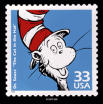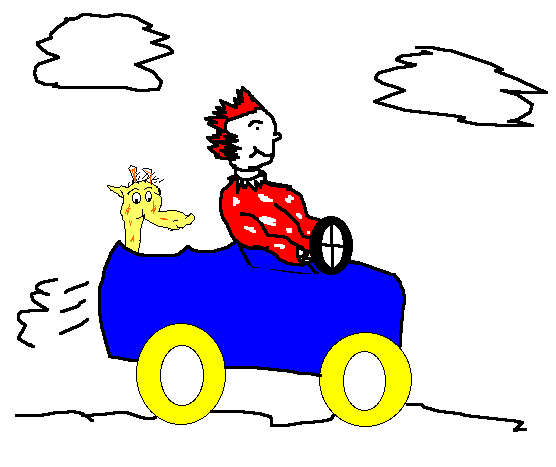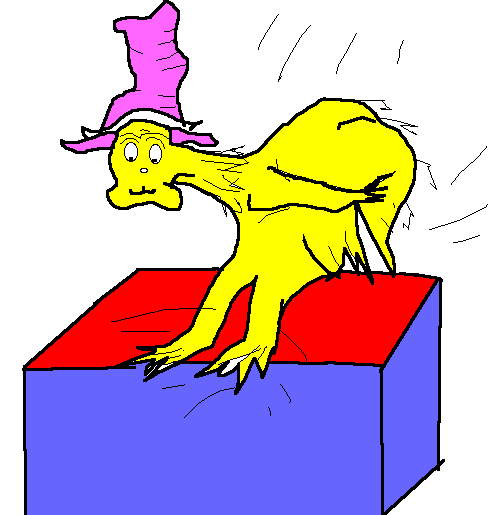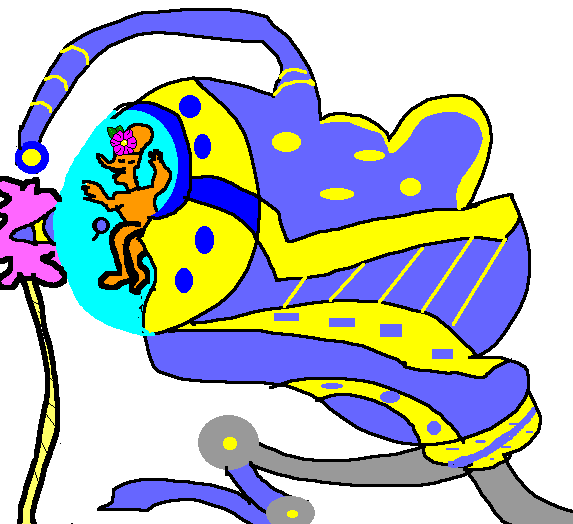|


Aims:
1. To identify the illustration
style used by Dr. Seuss.
2. To create illustrations using
the style of Dr. Seuss.
3. To effectively use a drawing and painting
application to create illustrations using the style of Dr. Seuss.
Materials:
Vocabulary:
Dictionary.com
may used to define the words below:
Motivation:
Elicit from students information
that they already know about Dr. Seuss' illustration style.
What
do we know about Dr. Seuss' illustration
style?
|
| The drawings are like
cartoons. |
| The characters look like
animals. |
| Bright colors are used. |
| Many characters look alike. |
| Many characters have big
bellies and scraggly hair and/or fur. |
| Many characters wear funny,
tall hats. |
| There are wild and crazy
vehicles and machines. |
Development:
Students are assigned to the same
groups as in Lesson 2 and are assigned
new roles. Roles include researchers who locate
information on the World Wide Web about the
illustrating style of Dr. Seuss; readers who read
the information aloud to the group that is found
on the web sites; recorders who take notes from
the information found on the web sites on the
chart below; and reporters who share the information
found with the class. Each group uses a different
web site from the list below. Students also use
the Dr. Seuss books assigned in
Lesson 2 to
analyze illustrations in each book read.
The following web sites will be
used to research information about the
illustration style of Dr. Seuss. Teachers may
wish to edit the material at each web site to
make the material more suited to the reading levels of
their students. Students answer the questions on
the chart below using information found at the
web sites listed.
1.
http://afn.org/~afn15301/seussfiles/seusspics.html
At this site students will find
many of Dr. Seuss' illustrations that appear in
books and magazines.
2.
http://carolhurst.com/authors/drseuss.html
A
biography, writing style and illustration style of Dr. Seuss are
explored.
3.
Secret Art Gallery
View photos taken from Dr. Seuss
books and read an analysis of the illustration
style.
Questions
|
Answers
|
| 1. What type of
characters does Dr. Seuss draw? |
outlandish, wild,
crazy creatures, oddly shaped and colored
figures |
| 2. What type of
settings does Dr. Seuss draw? |
otherworldly
settings, backgrounds have little detail, landscapes are
drawn to create distance |
| 3. Why did Dr.
Seuss draw outlandish characters and
settings? |
did not want to follow usual artistic conventions,
illustrations were intended to entertain, spark creative
thinking
|
| 4. What importance
does the art of Dr. Seuss have? |
reached new heights of artistic
expression with their bold sense of graphic design,
whimsy, and surreal sensibilities
|
| 5. How does the
art work of Dr. Seuss make people feel? |
spark our imagination and
challenge our own perceptions |
| 7. Describe the
use of colors in Dr. Seuss'
illustrations. |
limited number of
colors, vibrant colors |
| 8. Did the
illustrations help you understand the
story better? Explain how? |
only draws one
human face: all his people look alike
with minor adjustments |
Summary:
1. Students share information about
the illustration style used by Dr. Seuss by
presenting the information written on their group
chart.
2. Students use Kidpix to draw a
scene using setting and characters on the style
of Dr. Seuss and share them with the class. The
drawings may look like these.

by Georgie
|

by Susie
|

by Jai Fan
|
Follow Up:
In
Lesson 4, students will be writing and illustrating original
stories using the writing and illustrations styles of Dr. Seuss.
Related
Activities:
1. Students may view the
Secret Art
Gallery of Dr. Seuss which
contains paintings and drawings not seen in his
children's books.
2. Students may create an original
postage stamp honoring Dr. Seuss similar to the
one at the top of this page.
|
